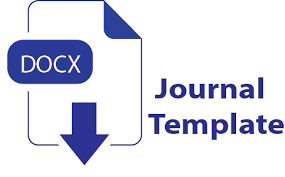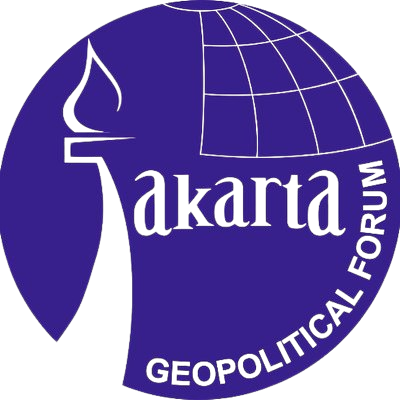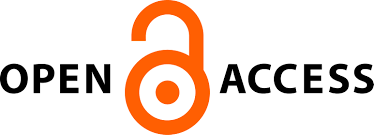DOWNSTREAMING TOWARDS INDONESIA EMAS
DOI:
https://doi.org/10.55960/jgf.v9i1.291Keywords:
downstream industrialization, middle-income trap, natural resource strategyAbstract
Indonesia is aspiring to be high income by 2045, which required to escape the middle-income trap, which involves strategic transformation of economy. This paper examines the core driving forces behind the transformation, focusing on productivity improvement, diversifying capital formation, and downstream industrialization. Through the method of qualitative content analysis, the paper learns from best practices and successful transitions in countries, for example China and Malaysia. This paper emphasized priority to pursue enterprise productivity, strong and strategic sectoral development, and institutional coherence. The paper conclude that a robust base for economic growth in the longer term is sustainable downstreaming, export competitive, human capital development and policy consistency. The study articulates a “Make in Indonesia” strategy to drive industrialization that will enable Indonesia to shift towards advanced manufacturing and transform into a cost-effective manufacturing base so that the country does not become mired in a middle-income trap.
Downloads
References
1. Thawley C, Crystallin M, Verico K. Towards a Higher Growth Path for Indonesia. Bull Indones Econ Stud. 2024 Sep 1;60(3):247–82.
2. Negara SD, Ramayandi A. Laying the Foundations for Future Growth Acceleration? Bull Indones Econ Stud. 2020 Jan 2;56(1):1–21.
3. Tan KT. Jakarta Geopolitical Forum IX/2025. 2025 [cited 2025 Aug 10]. Downstreaming towards Indonesia Emas. Available from: https://www.youtube.com/watch?v=DK6je9dj94I&t=18180s
4. Tan KT. Downstreaming towards Indonesia Emas. Jakarta; 2025.
5. Leven B. Middle-Income Trap: The Case of Poland. Bus Econ Res J. 2019;10(5):1029–38.
6. Paus E. Innovation Strategies Matter: Latin America’s Middle-Income Trap Meets China and Globalisation. J Dev Stud. 2020 Apr 2;56(4):657–79.
7. Primanthi M, Kalirajan K. Sources of Productivity Growth in the Indonesian Manufacturing Industries. J Econ Anal. 2023;2(4):31–46.
8. Prasetyo PE, Kistanti NR. Human Capital, Institutional Economics and Entrepreneurship as a Driver for Quality & Sustainable Economic Growth. Entrep Sustain Issues. 2020;7(4):2575–89.
9. Angelov I. The Square Theory of Economic Development. South Asian J Soc Stud Econ. 2023 Mar 28;18(1):30–6.
10. Agosin M. Economic Growth in Middle-Income Countries. London: Routledge; 2023. 325 p.
11. Eheliyagoda D, Li J, Geng Y, Zeng X. The Role of China’s Aluminum Recycling on Sustainable Resource and Emission Pathways. Resour Policy. 2022;76(1):102552.
12. Eltgen MP, Liu Y, Chong YK. Malaysia-Attracting Superstar Firms in the Electrical and Electronics Industry through Investment Promotion. In: An Investment Perspective on Global Value Chains. Washington D.C.: World Bank; 2020. p. 276–99.
13. Saunders M, Lewis P, Thornhill A. Research Methods for Business Students by Mark Saunders, Philip Lewis and Adrian Thornhill 8th edition. [Internet]. Research Methods For Business Students. 2015. 768 p. Available from: https://www.google.co.id/books/edition/Research_Methods_for_Business_Students/0DHFsgEACAAJ?hl=en
14. Krippendorff K. Content Analysis: An Introduction to Its Methodology [Internet]. SAGE Publications; 2018. 472 p. Available from: https://methods.sagepub.com/book/mono/content-analysis-4e/toc
15. Anderson JE, Larch M, Yotov Y V. Transitional Growth and Trade with Frictions: A Structural Estimation Framework. Econ J [Internet]. 2020 Aug 1;130(630):1583–607. Available from: https://doi.org/10.1093/ej/ueaa020
16. Wahyudi H, Palupi WA. Natural Resources Curse in Indonesia. Int J Energy Econ Policy. 2023 Mar 24;13(2):349–56.
17. Schröder M, Iwasaki F. From nickel to Electric Cars? Indonesia’s Resource Cum Automotive Industry Policy. J Asia Pacific Econ. 2024 Oct 1;29(4):2065–86.
18. Konewka T, Bednarz J, Czuba T. Building a Competitive Advantage for Indonesia in the Development of the Regional EV Battery Chain. Vol. 14, Energies. 2021. p. 1–13.
Downloads
Published
Conference Proceedings Volume
Section
License
Copyright (c) 2025 Author

This work is licensed under a Creative Commons Attribution-ShareAlike 4.0 International License.










